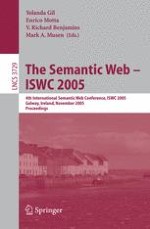A little over a decade has passed since the release of the ?rst Netscape browser. In 1995,the World Wide Web was viewedlargelyas an academiccuriosity.Now, of course, the Web is an integral part of the fabric of modern society. It is impossible to imagine science, education, commerce, or government functioning without the Web. We take the Web for granted, and often assume that Internet connectivity is guaranteed to all of us as a birthright. Although the Web indeed has become “world wide” and has lost a bit of its original aura as a consequence of its ubiquity, a burgeoning community of researchers and practitioners continues to work toward the next generation of the Web—a Web where information will be stored in a machine-processable form and where intelligent computer-based agents will access and automatically combine myriad services on the Internet of the kind that are now available only to people interacting directly with their Web browsers.
